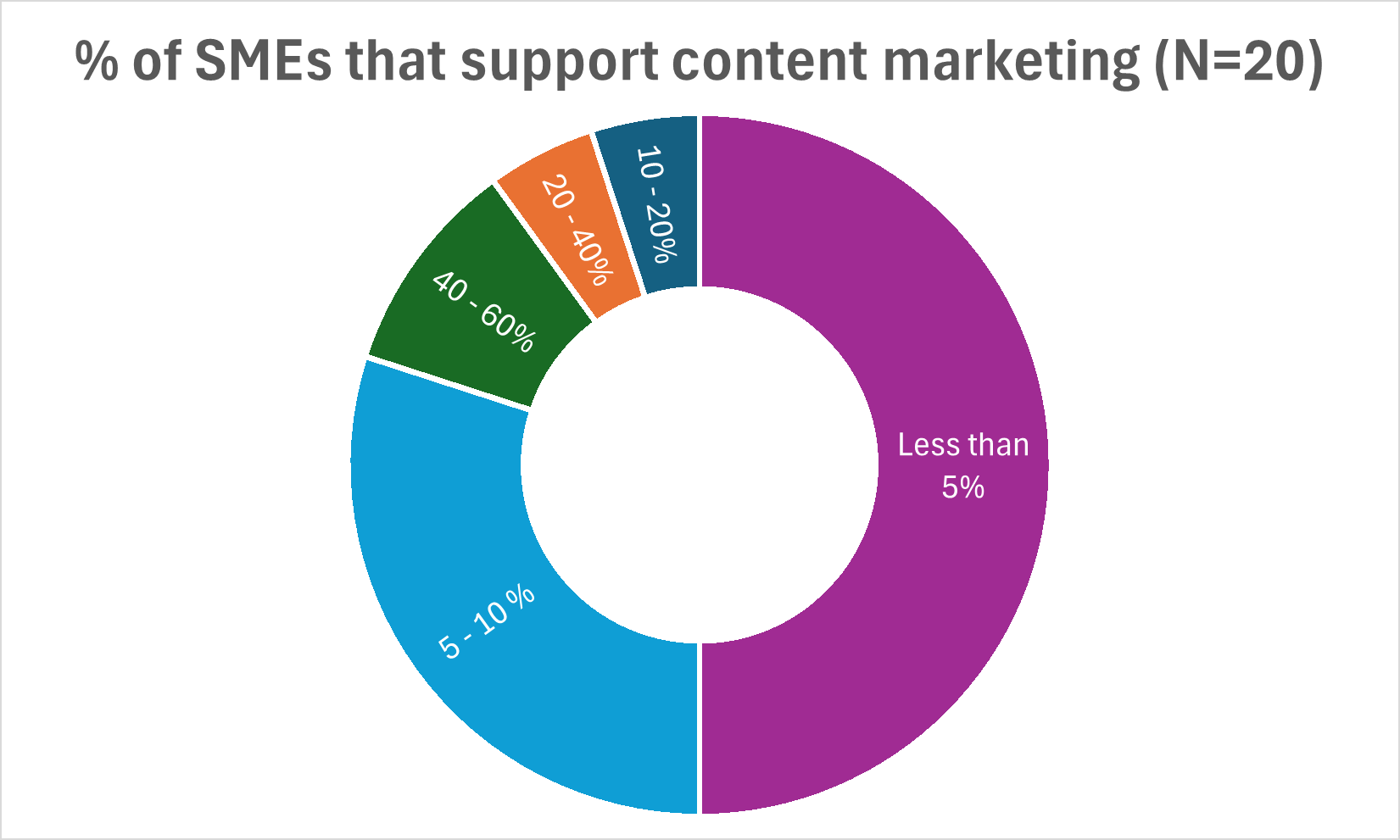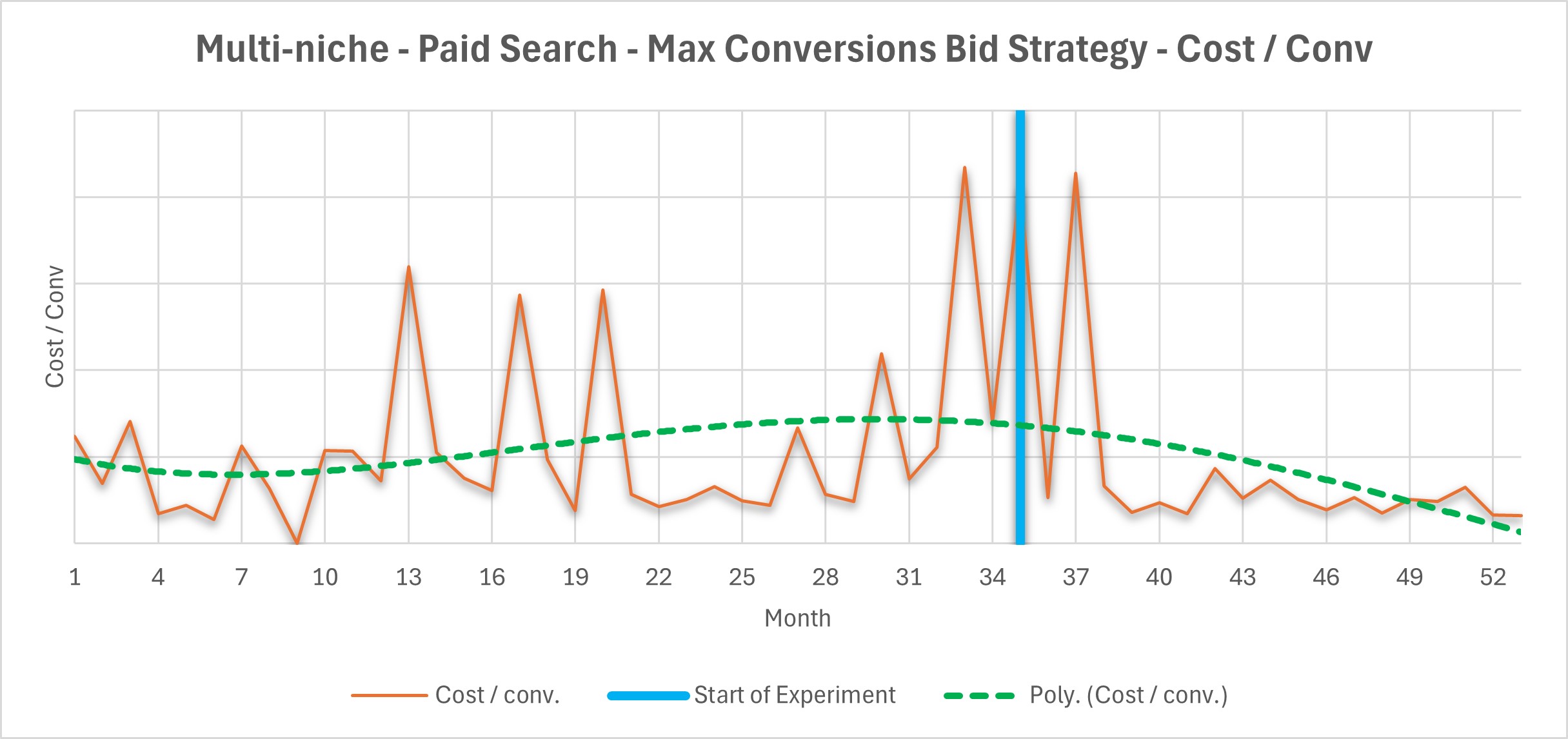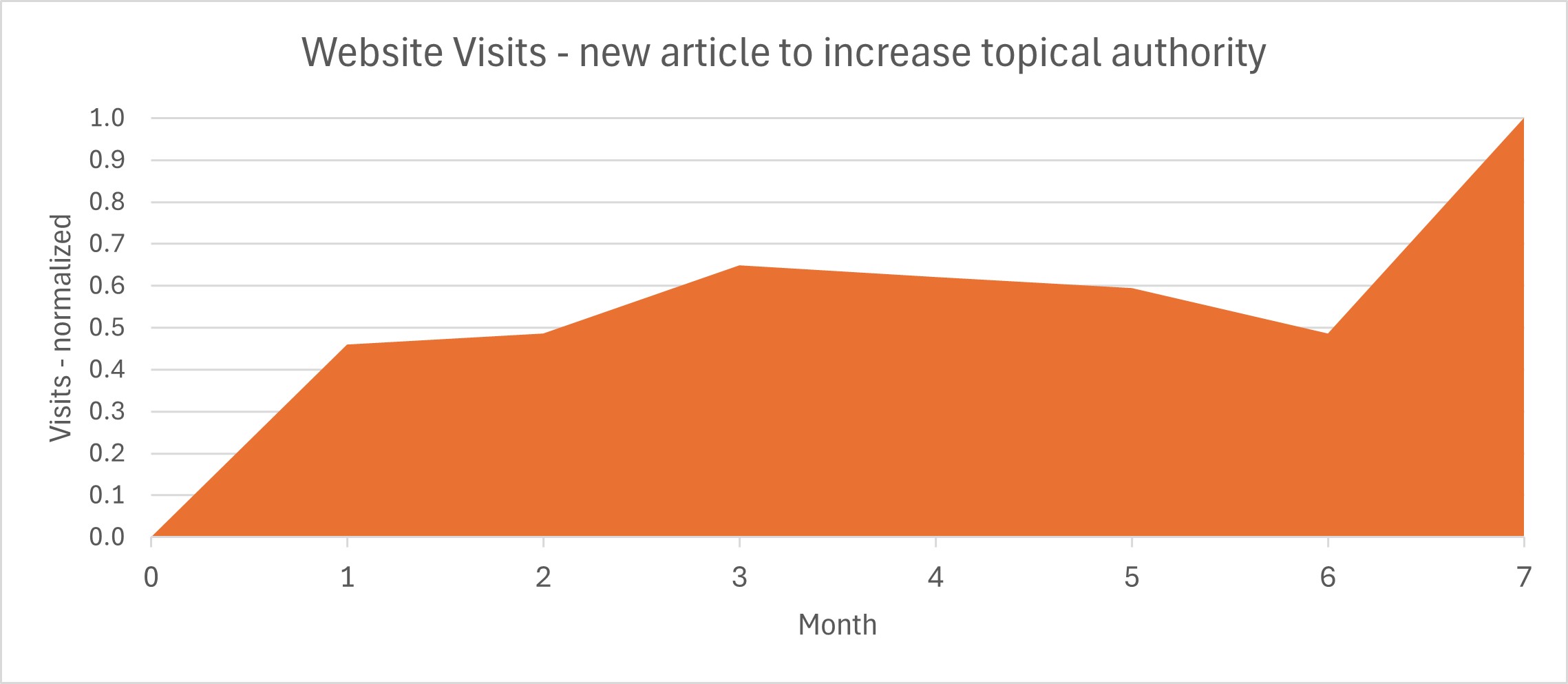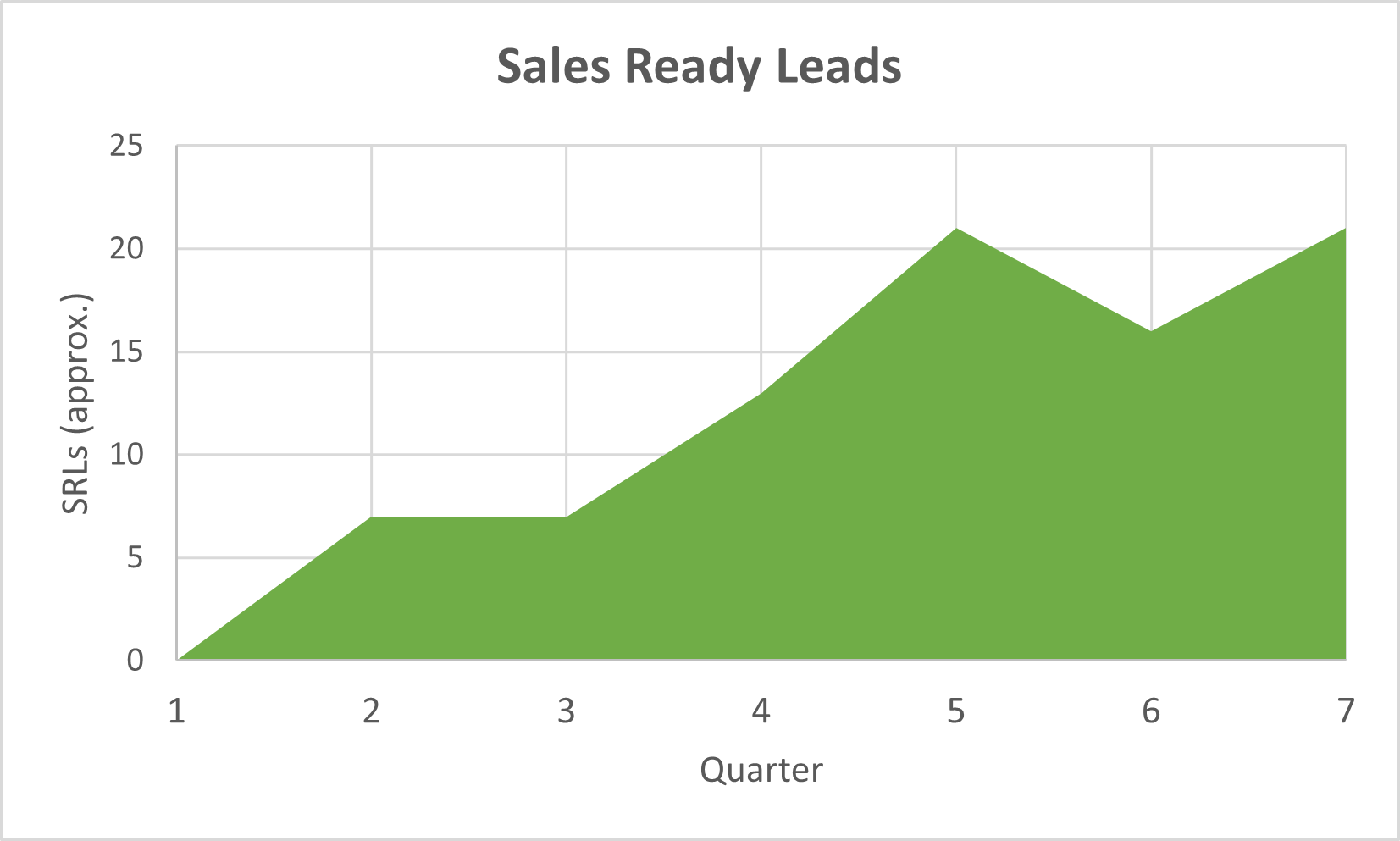Marketing for Small Engineering Firms
How to get more serious with your marketing. Tips and insights from an engineer.
Yeah, that’s right, I’m an engineer… at least I used to be. Though I’ve been told many times: “once an engineer, always an engineer”. I suppose at some level that’s true. I certainly mostly still think like an engineer, for better AND for worse 😊.
Last updated: September 29th, 2025
What does “small” mean?
“Small” means different things to different people. For this article, we’ll break “small” into 3 categories:
- Uncomfortably small – Less than ~15 employees – essentially a startup
- Sweet spot small – ~15-50 employees – the sweet spot for critical mass appears to be on the order of 25-50 but could vary based on your niche(s).
- Big-small – ~50 – 100 employees – not really small, but definitely not big, and likely not sophisticated from a marketing standpoint yet either. You’ve got a lot of long-term customers, a few really big ones, and your company has probably been around for decades.
Focus is your best friend
When your company is any sort of small, you can’t afford to spend millions of dollars a month on sophisticated marketing campaigns designed to stay top of your potential customer’s mind.
You also can’t afford to be everything to everyone. What ends up happening is that you look mediocre at everything, or you look just like everyone else in your niche. When it comes to marketing, that’s a recipe for disaster.
You need to focus to stand a chance of rising above the noise in some subset of things you do (niches).
How do you focus your marketing?
As a small engineering company, here’s how you focus your marketing:
- You select a small number of niches.
- You choose a small number of marketing methods.
- You pick a primary marketing objective.
Niche selection
A niche is a way the market views a problem. It’s the way they look for help. It may or may not align with some of the ways that you already describe what you do.
The purpose of a niche is to get narrow. You focus your energy on a specific way the market views its problems.
Once you select a niche, you don’t need to stick with it forever. That’s not the point. The point is to focus your energy long enough to get a sense of where you stand in the market (you’ll generally want to stick with a niche for at least ~9-15 months for most engineering niches).
See why you need a niche, and what to do about it for more.
Marketing methods
There are too many. It can be overwhelming. Let’s simplify this a bit.
At the top level, you’ve got the main marketing philosophies:
- Inbound marketing
- Outbound marketing
Outbound marketing is more focused on interrupting people when you have something to say, trying to capture their attention, and hoping they’re interested enough in what you have to say to keep listening. The timing is asynchronous with what they’re doing at the moment, and asynchronous to the timing of their needs.
Inbound marketing is focused on positioning yourself to show up when someone has a need (either when they’re looking for services or looking to learn something).
As a small company, you’re likely going to want to select inbound or outbound as your core philosophy, and potentially tinker with the other, depending on how small and how mature (from a marketing standpoint) your company is.
One philosophy isn’t necessarily better than the other. It’s a cultural choice as much as anything.
RocLogic is heavily inbound marketing focused. This aligns with my personality as an engineer. I don’t like to be annoying or pushy. I do like to help people and teach them.
The next layer down consists of marketing methods. You’re likely at least vaguely familiar with several of these. Here are some common methods for your consideration, as well as whether they align more with inbound or outbound:
| Method | Inbound or Outbound? |
|---|---|
| Organic search (SEO) | Inbound |
| Paid search (e.g. Google Ads PPC, Microsoft Ads PPC) | Inbound |
| AI-based search | Inbound |
| Email marketing | Fuzzy area |
| LinkedIn posting | Mixed, but tilted toward outbound |
| Cold outreach (e.g. cold calling, InMail on LinkedIn) | Outbound |
| Networking events | Outbound |
| Tradeshows | Outbound |
| Partner channel | Outbound |
Primary marketing objectives
The way I see it, there are 3 potential objectives when marketing a small engineering company:
- more (or better) sales-ready leads,
- increased brand awareness / company visibility,
- improved sales support.
When forced to pick one, most engineering companies would choose sales-ready leads as a primary marketing objective. That doesn’t mean you have to, but you probably will.
Ok, but how many niches, how many marketing methods, and which marketing objective, you say?
The answer depends on which category of small your company falls into. Let’s look at each category of small.
Marketing strategy for “uncomfortably small” engineering firms
Indicators that you’re in this category:
- You struggle to differentiate yourself from other companies.
- You have very little budget allocated to marketing.
- You have no internal marketing resources, or if you do, they’re either more of a marketing support “helper” or they “do marketing” alongside HR and accounting.
- You often have very little content on your website, or you have some but it’s not very useful.
- Most of your new business leads either come in through referrals, a partnership you have with another company, or founder networking.
If this feels like you, then here’s where I’d start:
| # of niches to target: | Likely 1 active, 1 background. |
| # of marketing methods to leverage: | 1 primary, 1 secondary. |
Strategy tips:
Get narrower than you want to be.
You need to focus. This size is likely an unenviable position to be in. You have trouble standing out, and you can’t necessarily afford the marketing help you need. That’s not always the case at this size, but it appears relatively common.
You need to be as laser focused as possible to try to rise above the noise in the market. This doesn’t mean you’re picking one niche forever by any means. What it means is that at any point in time you’re only actively targeting one niche, and maybe exploring another in the background.
You can switch niches over time. Generally, your decision to switch should be heavily influenced by market feedback, and you’d usually do so after targeting it for at least ~6-12 months (unless something becomes apparent before then that makes it a no-brainer to switch).
Proof point gathering
You need to grind and occasionally pull off a few heroic moves to satisfy your best clients, so that you can get more work to stay viable and gather more proof points. Proof points are how you show strangers that you know what you’re talking about. In the world of engineering, this consists of things like case studies, metrics, certifications, etc.
Learn how to become a better writer.
This takes rolling up your sleeves and making an active effort to learn how to get better on a regular basis. Start with a couple good books on writing, and then practice, practice, practice. You need to get to a point where your thoughts are easily translated into engaging articles, helper tools, landing pages, case studies, emails, or social media posts.
Take an aggressive stance with your articles, posts, and landing page positioning.
You need some way to stand out in the crowd. And you’re going to mostly have to bootstrap yourself to grow out of this category if you’re feeling uncomfortably small.
Start gathering customer feedback
Most engineering companies are reluctant to gather feedback from their customers. But you need it. That’s a significant source of insights for learning where to focus your energy, and how to position your content.
Next steps:
First you need to decide whether you want to be more inbound-focused or outbound-focused.
If you want to be more inbound-focused, RocLogic can help orient you so that you better understand where to put your energy and how to focus your efforts. I could be wrong of course, but you may not want to pay a company like RocLogic for more than maybe ~6 months at this stage, so much of the heavy lifting is going to fall to you to bootstrap yourself until you get to that sweet spot where we can work together for a longer duration at a deeper level.
Marketing strategy for “sweet spot small” engineering firms
Indicators that you’re in this category:
You mostly feel like your business is sustainable. Maybe not 100% of the time, but at least ~2/3 of the time. The other 1/3 you’re either concerned about having too much work, or not enough.
You’ve been doing impressive work for clients for several years. You’re clearly adding value, and you’re starting to notice patterns in customer behavior and the work you do.
Given the 3 main marketing objectives, you’re probably most interested in SRLs, but you may start to think a bit about your brand. If forced to select one, you’d likely focus on SRLs.
If this feels like you, then here’s where I’d start:
| # of niches to target: | Likely 2 active, 2 background. |
| # of marketing methods to leverage: | 2 primary, 1-2 secondary. |
Strategy tips:
Find your core niche(s)
You need to figure out what your core niches are going to be for the foreseeable future. You don’t do that by just saying it and then making it so. You do it by:
- Figuring out where you add the most value.
- Figuring out what you’re passionate about.
- Being brutally honest with yourself about where you believe you stand in the market.
- Deciding if there’s enough market opportunity in the niche.
- Experimenting to see how well you resonate with the market.
Pay attention to emerging patterns
Start leveraging the emerging patterns that you’ve noticed in your marketing. For example, if certain client characteristics are important, make it clear in your messaging that you’re talking to that person.
Maybe some patterns aren’t super clear to you yet, but if you sit in a quiet space for an hour, you can identify several customer patterns that you can tell are related to strengthening your business. Those patterns might be related to things like:
- Certain types of problems you’re solving,
- Certain industries you work in,
- Certain engineers that almost always seem to have an outsized impact on your clients relative to your other engineers.,
- Certain client characteristics (could be their personality, their role, company size, etc.)
More of your SMEs need to support content creation
You need to start thinking about a few SMEs that can support marketing as needed. If you can’t identify these people easily, you’ll have to figure out who could become those people. Also, keep this need in mind when you hire new SMEs going forward.
I ran a small poll on RocLogic’s website and asked: “Engineering and Software dev leaders: What % of your SMEs (Subject Matter Experts) support your company’s content marketing efforts?”
Here’s what they had to say:

And here’s that same data set reduced to two bucket sizes (<10%, and >10%) to emphasize the point that most respondents suggest that <10% of their SMEs are involved in their company’s content marketing:

That’s not good IMO.
Of course, different sized companies should have different % of their SMEs involved in content marketing efforts (smaller companies should have a higher % than larger companies). For “sweet spot small” engineering companies, I’d be much more comfortable if ~15-25% of your SMEs are contributing to content.
Improve your ability to gather customer feedback
My guess is that you’ve started making some attempts to gather feedback from your customers. But you probably don’t do it consistently. Several mechanisms to consider:
- Sales conversations
- Polls
- Surveys
- Customer interviews
- SME interactions
Next steps:
At this stage, you just need to act. If you’re not sure where to start, you’re not alone (if interested, check out 5 roadblocks that stop tech companies from moving forward with marketing) . If you want to start taking action, reach out for a chat and we can discuss next steps.
Marketing strategy for “big-small” engineering firms
Indicators that you’re in this category:
You kind of feel like your company’s in an awkward spot. Too big to be small, but too small to be big.
You’re a known name within the walls of a handful of large organizations because you’ve pulled off what they considered to be heroics a few years ago.
You may waffle a bit about whether you want to become a mid-sized company or not. You believe the pros and cons of doing so are real, so you’re hesitant. Should you acquire a smaller firm that could really round out your capabilities? Should you do more work for your best large clients even though you know that puts you at risk if something happens with that client?
If this feels like you, then here’s where I’d start:
| # of niches to target: | Likely 4 active, 2 background. |
| # of marketing methods to leverage: | 2-3 primary, 1-2 secondary. |
Strategy tips:
Refine and solidify your marketing machine
You’ve got the experience and capability to help your customers with several different types of problems, and you should be tinkering with marketing of new’ish problems that you can help them solve.
Select and experiment with a couple different marketing methods
Experiment with different ways of getting new customers and doing more work for existing customers. Your overall marketing and sales efficiency will decrease, but your goal here is to de-risk having too many eggs in one marketing basket.
You probably have more than one person that can help significantly with certain marketing experiments. You may not have a marketing team yet, but there’s a good chance you’ve got one dedicated marketing person (that’s likely stretched too thin), and maybe a couple people that can support various efforts. For example, maybe your CEO can be involved with some outbound method like networking or tradeshows. Maybe some of your sales team can help create content or help with LinkedIn InMail outreach.
Start creating customer-supported cornerstone case studies or webinars
Take the time to start creating case studies that involve the customer directly, tells their story, how you helped, contains direct quotes, and maybe even a little video. This type of case study takes a lot more effort than a basic case study, but should contain rich with insights and proof points.
Your SMEs need to be out in the world more often
Have multiple SMEs regularly contribute to external thought leadership publications. Your company’s reputation depends on it. And reputation is part of your brand; a word that generally puts a bad taste in my mouth, but also matters more for smaller companies as AI-based search gains traction.
Take a look at ABE (often called ABM)
Should you be experimenting with Account Based Engagement (ABE)? I don’t know. But I do know that you ought to consider it. Why? Because it’s a method that may be within your reach from a company maturity and financial standpoint, that often isn’t for smaller companies. Check out inbound vs ABE to compare and contrast, keeping in mind that you can probably do both at your size.
Next steps:
At this stage it’s mostly about resource allocation. On a ~yearly basis, you want to prioritize these dimensions to decide how to proceed and where to focus:
| Marketing focus dimension | Rank / Priority |
|---|---|
Business level objectives:
|
|
| Stack-ranked active niches | |
| Stack-ranked background niches | |
| Stack-ranked primary marketing methods | |
| Stack-ranked secondary niches |
So now what?
Take action. Either start working through these things yourself or get help.
The way RocLogic approaches marketing, the collaboration flow usually looks like this:
- Select a niche
- Create / update content.
- Start testing / experimenting.
- Assess market feedback.
- Iterate / pivot / refine.
If you’d like help focusing your marketing efforts, feel free to reach out for a chat.







